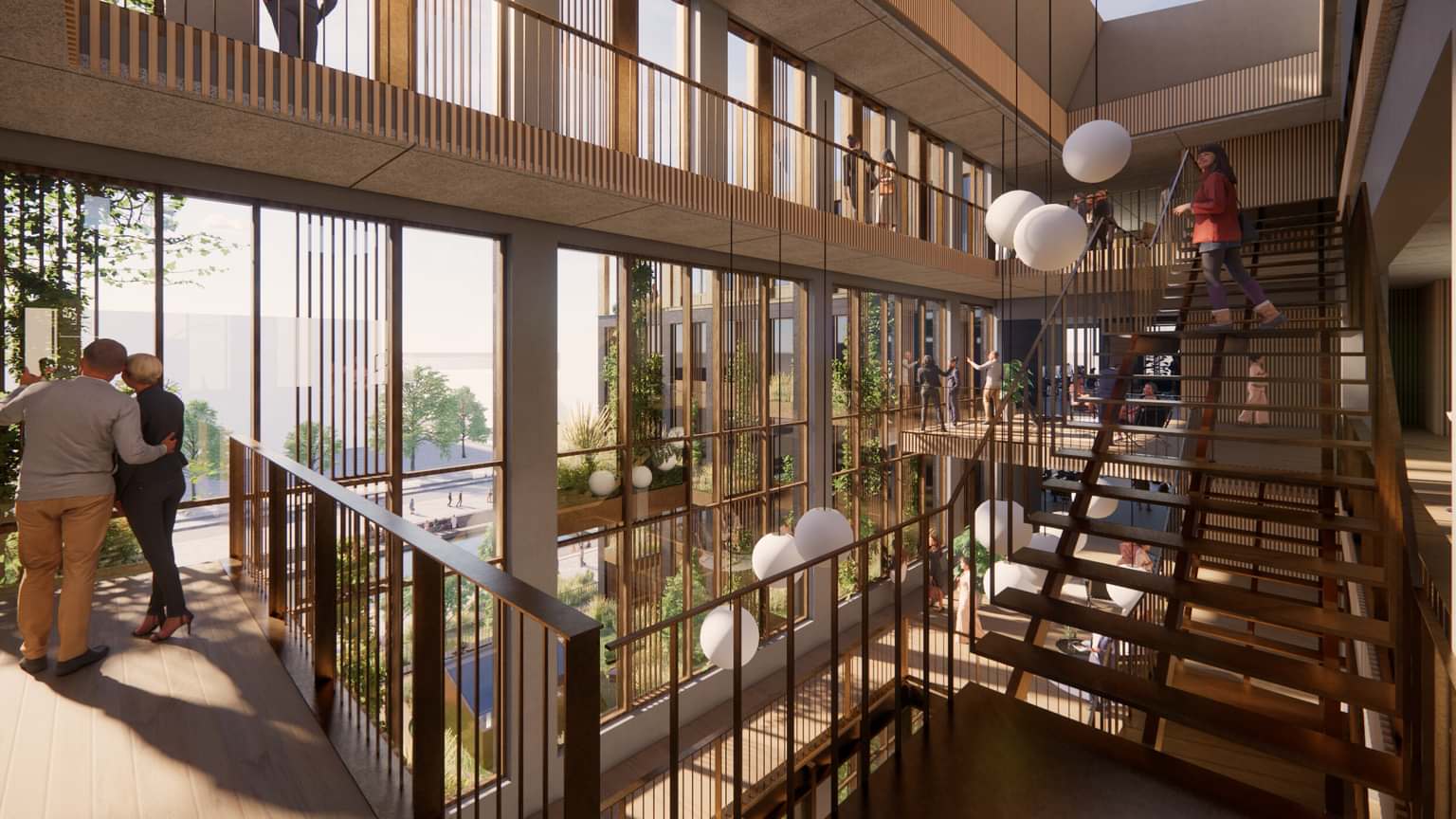Collaboration across the construction industry can reduce CO2 emissions from construction
October 9, 2024

Consultants and contractors must work together if the industry is to achieve the stricter requirements for CO2 emissions, which will come into force in the summer of 2025. Nordstern and the project team behind Svanemølleholm in Copenhagen, together with Sweco, are investigating how CO2 emissions can be further reduced in similar office buildings.
The construction industry is continuously working to improve processes, materials, and equipment to meet the increasing demands on the climate footprint of construction. In order to be ready for the requirement for a maximum average emission of 7.1 kg CO2/m²/year for new construction next summer, Nordstern has signed up to the Svanemølleholm project as part of Sweco's initiative to develop concrete solutions to reduce the climate footprint of construction.
The office project in Copenhagen has been chosen because of the client's high ambitions for certifications, including DGNB Platinum, DGNB Heart, DGNB Diamond and the EU Taxonomy 7.7. With this project, the team seeks to investigate how the industry can handle CO2 emissions from transport and the work on the construction site itself.
It is an experienced project team from Svanemølleholm that contributes to the project. The team has already gained several insights from the design process, including how to balance the various certification requirements with the goal of reducing CO2 emissions, so that the solutions can be adapted to the specific conditions.
It is hoped that the experience gained from Svanemølleholm can positively contribute to Sweco's goal of gathering insights and creating a catalogue of low-emission buildings that can inspire future construction projects throughout the Nordic region.
"Collaboration across the industry is absolutely necessary for us to continue to reduce the climate footprint in new construction as well as in the transformation of existing buildings. Therefore, I am proud that Svanemølleholm is contributing to the project for the Nordic Council of Ministers to reduce the climate footprint of construction," says Christine Collin, Head of Department, Sustainability in Construction at Sweco.
Common goal of CO2 reduction
To get the good ideas on the table and bring the project parties together, specialists and consultants from Sweco and Nordstern have participated in a workshop. The purpose of the workshop is to focus on the climate footprint of the construction process, especially on the parts that deal with transport and the work on the construction site itself.
The transport (A4) covers all the CO2 emitted by transporting materials and equipment to the construction site. The work on the construction site (A5) includes the energy consumption that goes into operating the machines and the work on the site, as well as how construction waste is handled.
It is the project team from Nordstern, AFRY, and Henning Larsen (engineering and architectural consultants at Svanemølleholm) who have created the framework for the project to achieve the goals for reduced CO2 production in the construction of Svanemølleholm.
The goal is to find out how large a share these activities constitute of the total climate footprint and how we can calculate the emissions earlier in future projects. At the same time, we are investigating how we can reduce emissions from transport and construction site work and ensure that we comply with the necessary requirements.
All parties worked together to ensure that these initiatives support a project like Svanemølleholm's various certification requirements, including the EU taxonomy. By bringing together the project parties, we get the opportunity to share knowledge and perspectives that can form a common starting point, which will ensure that the solutions for future projects not only reduce CO2 emissions, but also adapt to the certification requirements and create a more efficient and sustainable project process.
It is a complex job that lies ahead. By starting from Svanemølleholm, Nordstern and the consultants will have the opportunity to enter into a dialogue about how much of an effect the various initiatives will have on CO2 emissions and compliance with the individual certifications and the EU's taxonomy. The project team has the experience to determine whether the amendments will align with both compliance with the EU taxonomy and the criteria in the other certifications. Therefore, an interdisciplinary collaboration like this is crucial.
"We are proud to be able to contribute to this important initiative with Svanemølleholm. The project is a model for how large construction projects can integrate sustainability and CO2 reduction in practice. The collaboration with Sweco and the consultants gives us the opportunity to test new methods that can set a new standard for the sustainable construction of the future. We want to measure and reduce these emissions to promote sustainable building practices and comply with regulatory requirements." says Jacob Tvede, Head of Department Design at Nordstern.
Nordic catalogue of low-emission buildings
Svanemølleholm is one of several projects in Sweco's work for the Nordic Council of Ministers, which aims to gather experience from ambitious projects and publish a comprehensive catalogue of low-emission buildings. This catalogue will provide the construction industry with valuable insights into how solutions such as circular economy and extending the life of buildings can be implemented. The catalogue will serve as a resource for future sustainable projects in the Nordic countries and Estonia. The catalogue will inspire and guide the industry to achieve the sustainability goals of the future, where experiences from Svanemølleholmen and other projects will serve as concrete examples.
The Svanemølleholm project is being realised by Industriens Pension as the developer, Nordstern as turnkey contractor and project developer, and with AFRY ApS and Henning Larsen Architects A/S as consultants.
PR and Communication



